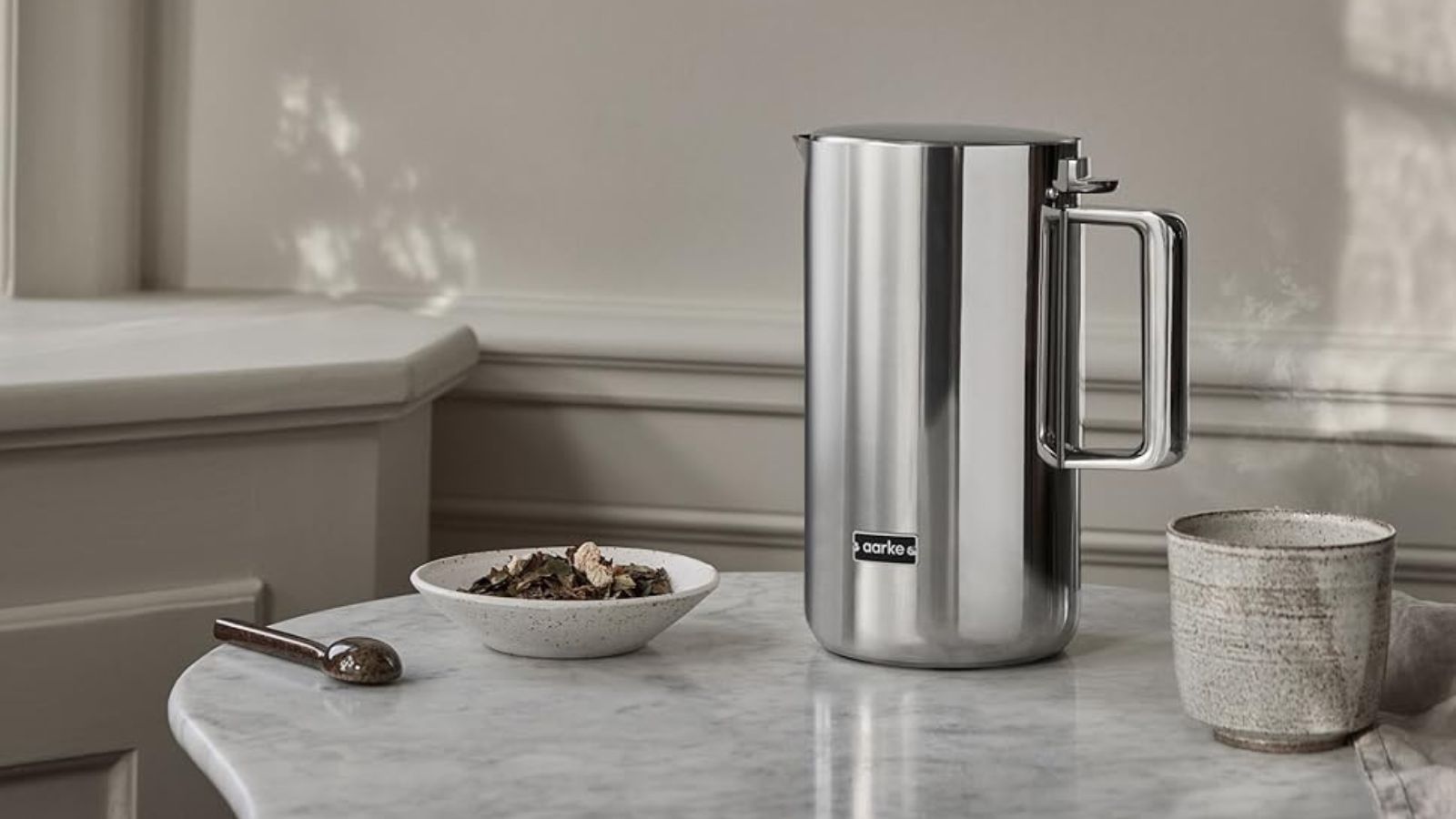
The Aarke Electric Kettle would make a great gift for the tea-lover in your life. A coat of stainless steel and long, lean lines elevate this ordinary appliance to an eye-catching kitchen companion. It doesn't just look good − it works well, too. This electric kettle features a heat-retaining double-wall design for energy efficiency.
Sure, you could find a cheaper kettle online, and one of my biggest criticisms is the price. Let's face it, you could just pour water into a bowl and heat it in the microwave to boil for free. But this kettle offers precision and ease that a microwave, or cheaper electric kettle can't match. Many of us boil water every day to make tea, coffee, instant ramen, and the like. If you're boiling that much water, you might as well invest in an electric kettle – and Aarke's is the best you'll find.
I'm part of a product testing team here at H&G. Together, we've tried and tested some of the world's best electric kettles. I know my goosenecks from my tea kettles, and I know what I'm looking for in an appliance: a quick, quiet kettle that retains heat and regulates temperature. I tested the Aarke Electric Kettle at its minimum and maximum temperature, as well as its minimum and maximum boiling volume, to give you the fullest possible picture of what it might be like to use this product.
Aarke Electric Kettle review
Aarke Electric Kettle specifications
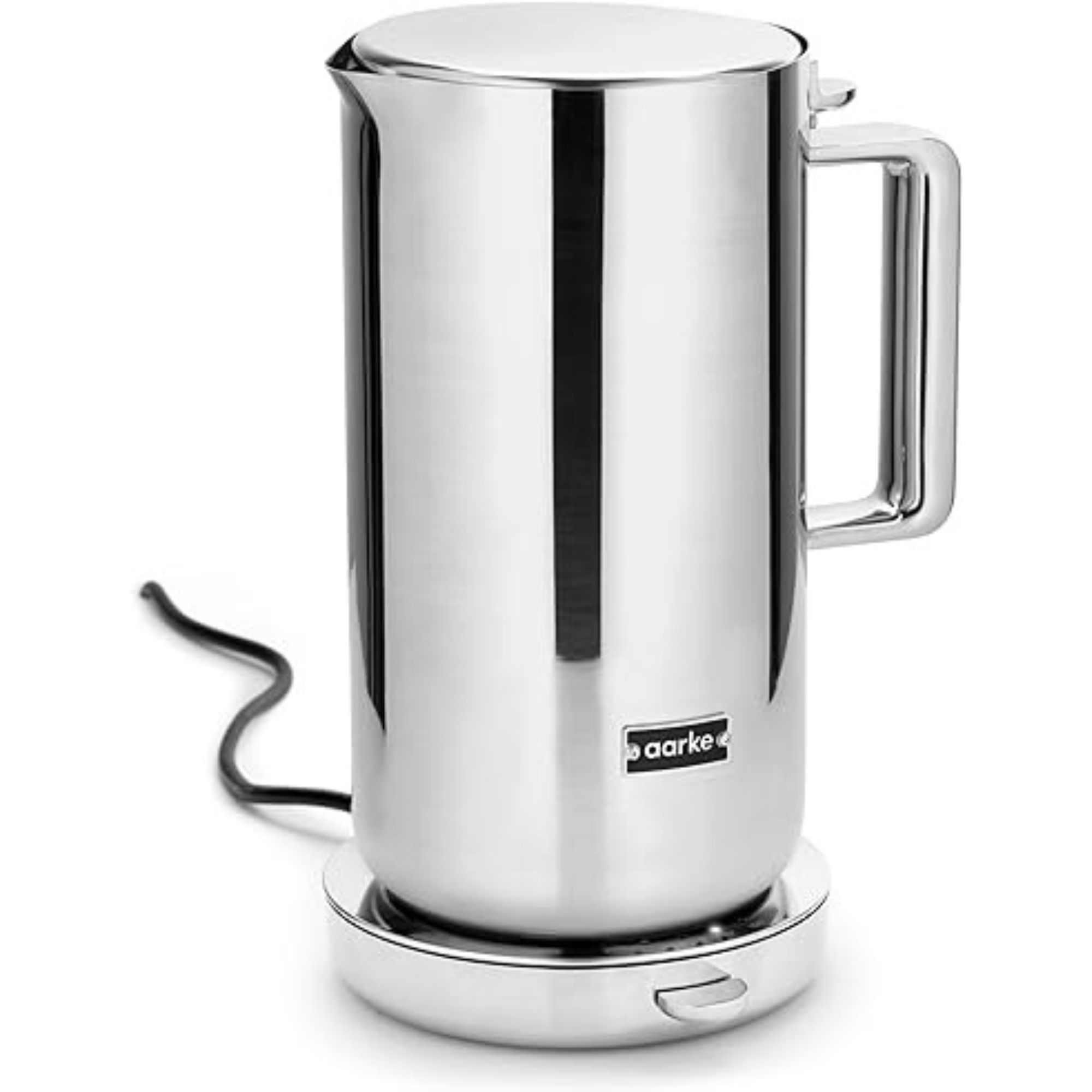
Unboxing the Aarke Electric Kettle
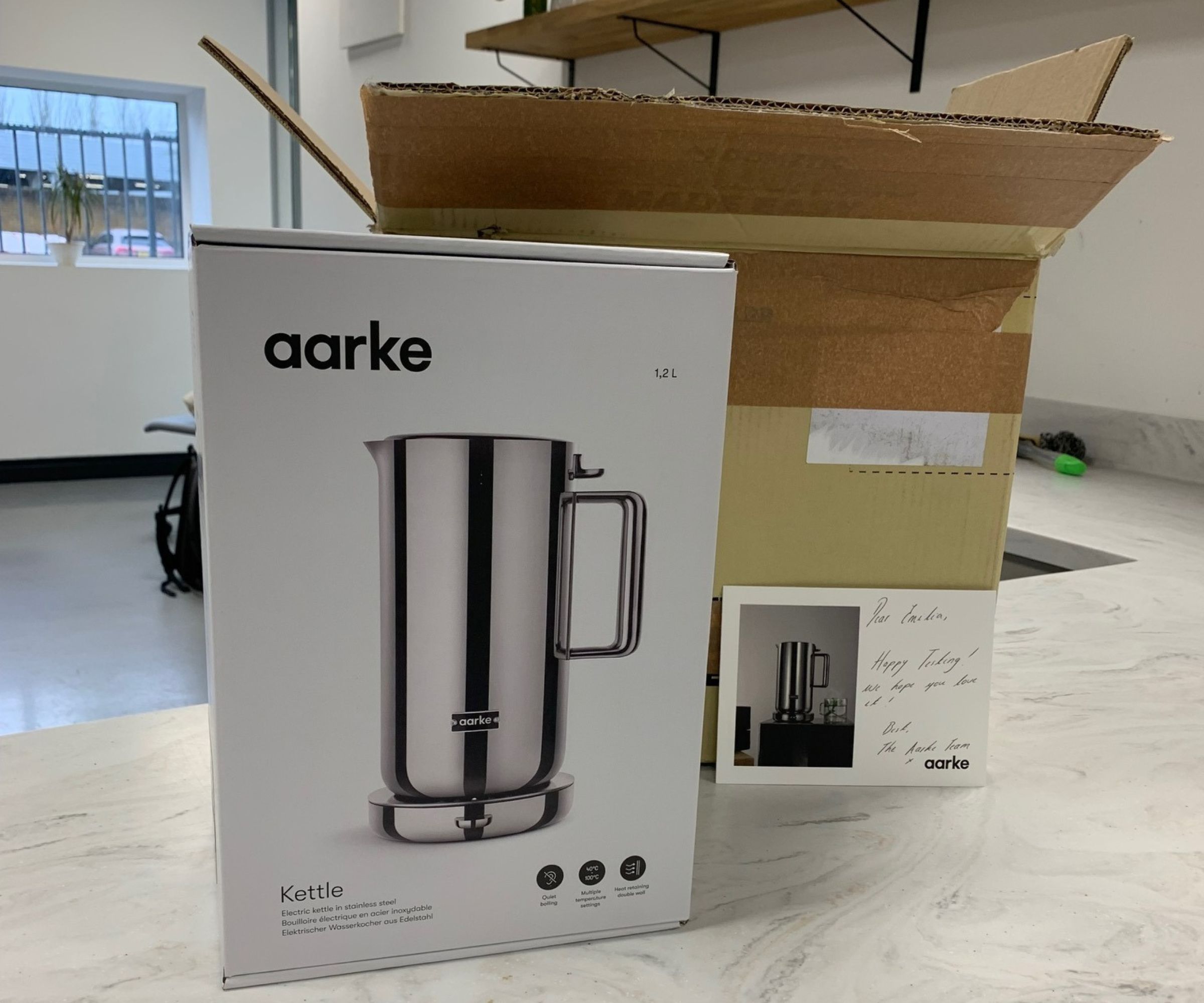
The Aarke Electric Kettle came double-wrapped in cardboard boxes, presumably to protect against knocks and bumps in transits. When I opened the box, I was pleased to see egg-crate cushioning and cardboard envelopes in place of polystyrene and single-use plastic. Sustainable packaging makes such a difference, especially when you consider that the kettle and the power base are individually wrapped. I threw the cardboard straight into the recycling bin and carried on unboxing.
Each Aarke Electric Kettle comes with a microfiber cleaning cloth and a quick start guide, as well as an instruction manual. I wouldn't throw these away, especially if you're new to brewing. Inside the instruction booklet, you'll find detailed diagrams that identify the function and design of each kettle component, hazard warnings and a cleaning guide.
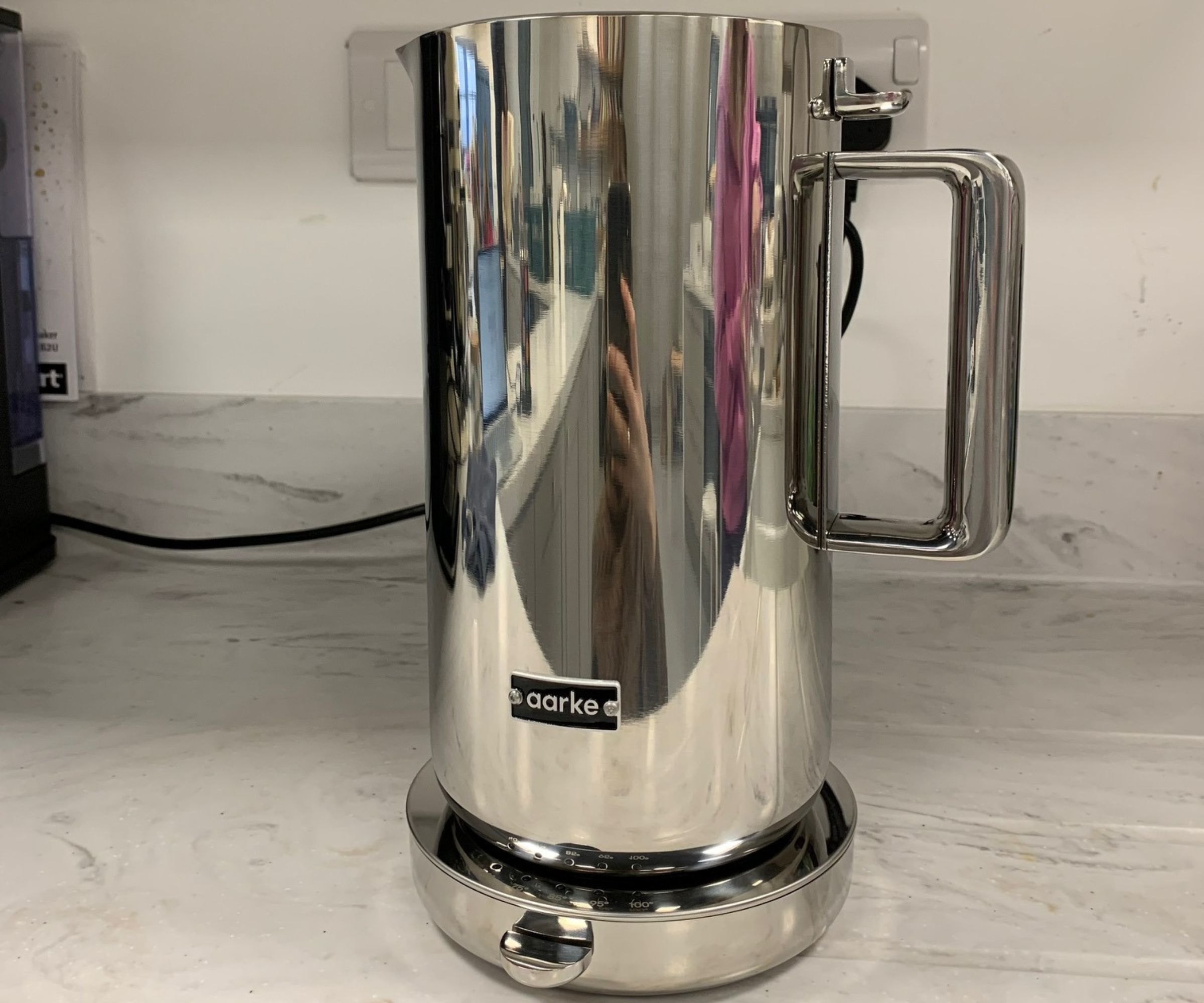
Measuring a little less than eleven inches tall and eight inches wide, the Aarke Electric Kettle is neat and narrow. It should easily slot beneath low cabinets and fit right into smaller kitchens. Once I'd got the kettle out of the box and onto its power base, I was immediately struck by its stainless steel sheen. It looks so much better than a matte black or bright white body. The stainless steel inevitably picks up finger smudges, but it's nothing that a quick buff with the microfiber cloth can't fix.
As electric kettles go, this one is pretty smart, with adjustable temperature settings and an LED cool-down indicator that prompts you to pour or reheat. The Aarke Electric Kettle features a non-drip spout to minimize spills and stains, as well as a double-wall construction to keep warm air in and cold air out.
Test 1: Minimum water level, maximum temperature
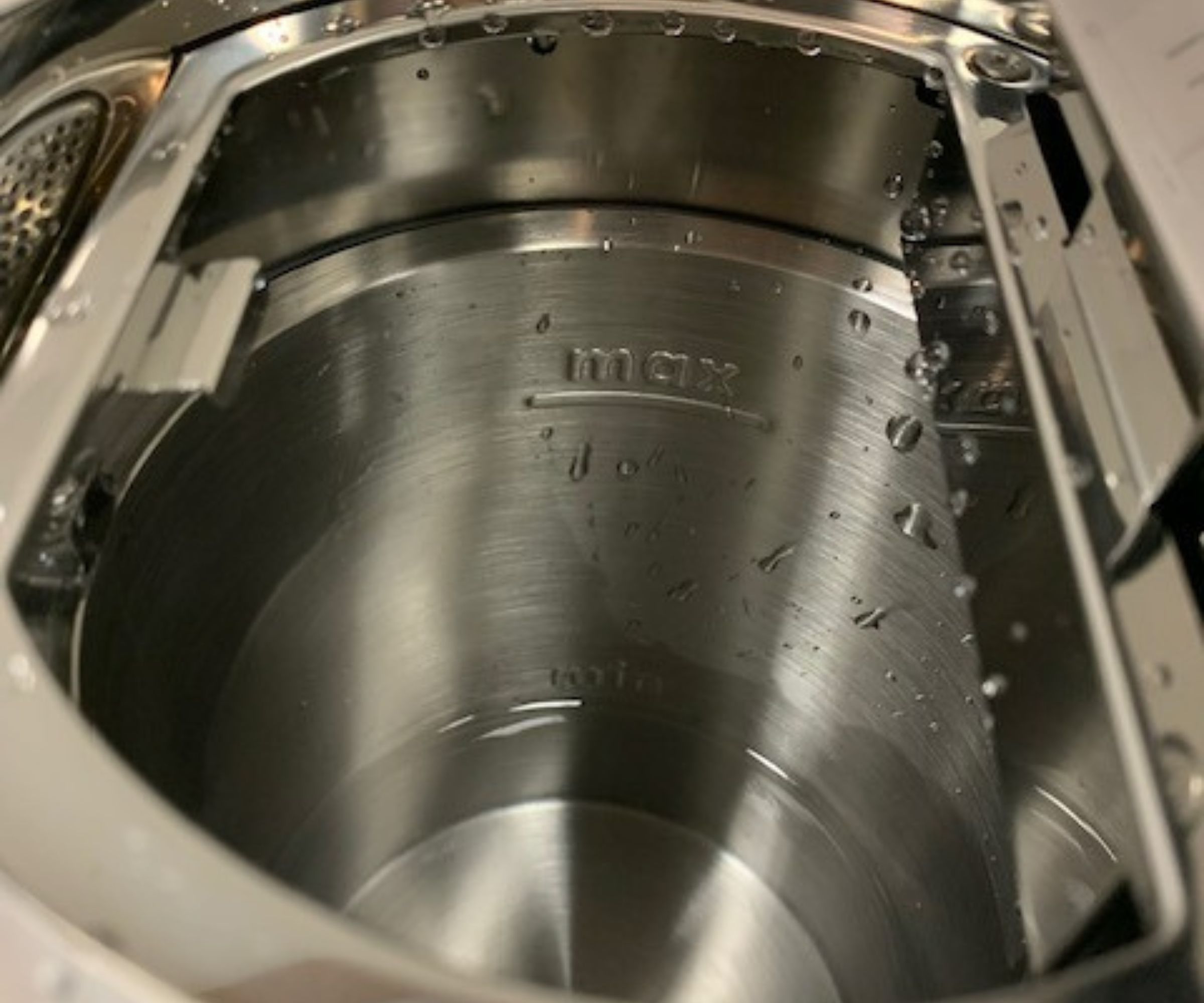
Normally, when I test kitchen appliances, it's a complex operation. I need access to the best fresh and frozen ingredients, a fully-stocked spice cupboard, and space to cook. To test the Aarke Electric Kettle, all I needed was running water from a faucet, my trusty digital thermometer, and a timer
I wanted to test the kettle's thermoregulating abilities across little and large volumes of water. Some electric kettles can boil just enough water to brew a perfect cup of tea, while others are better for batch-boiling, and I was keen to see into which category the Aarke Electric Kettle fell. For my first test, I decided to boil its minimum 16.9 fl. oz.of water at 212°F. To make it a little easier on myself, I measured in °C.
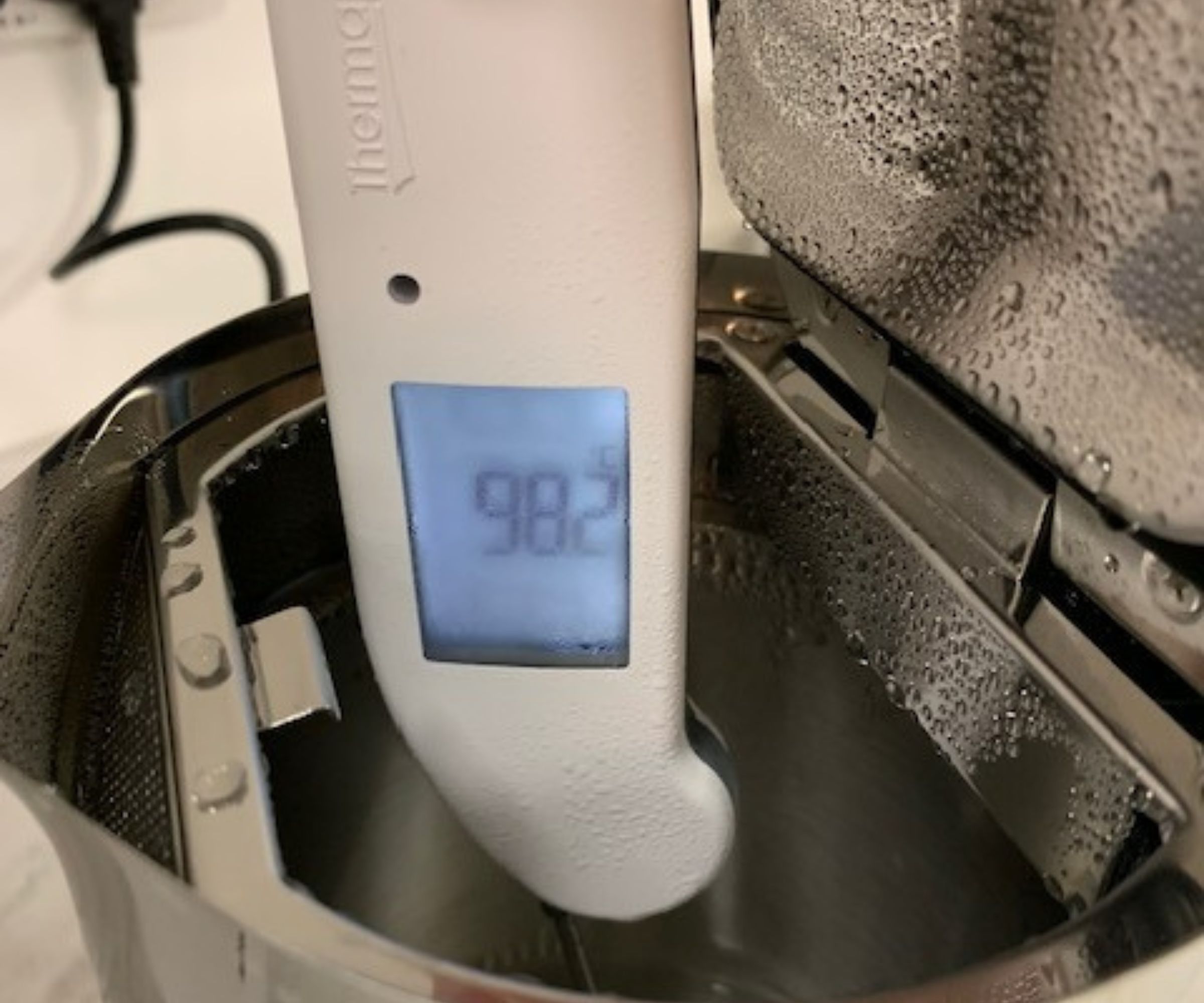
I lifted the lid of the Aarke Electric Kettle and filled it up with water to the minimum boiling volume. I slotted the kettle onto its power base and pressed the button at the bottom of the machine. I pressed it once to set the kettle to 212°F: if you keep pressing in short bursts, you'll cycle through the lower temperature options.
As soon as the lid was down and the button pressed, the Aarke Electric Kettle began to boil. For the first 30 seconds or so, it was completely silent. Just as I started to wonder whether I'd missed a step, the kettle began to make a low rumbling sound. At its peak, the noise reached 74dB, which is about as loud as a vacuum cleaner: noticeable, but you can still hear yourself think.
The Aarke Electric Kettle boiled 16.9 fl. oz. of water in 100 seconds: the machine beeped to let me know when it was done. If that sort of sound gets on your nerves, you can disable the beeping by long pressing on the power base button, but I didn't find it too irritating. Straight after boiling, the water was a perfect 212°F. By the time I'd got out my digital thermometer, it had dropped a few degrees. That's my fault for leaving the lid open, not the machine's.
Test 2: Maximum water level, maximum temperature
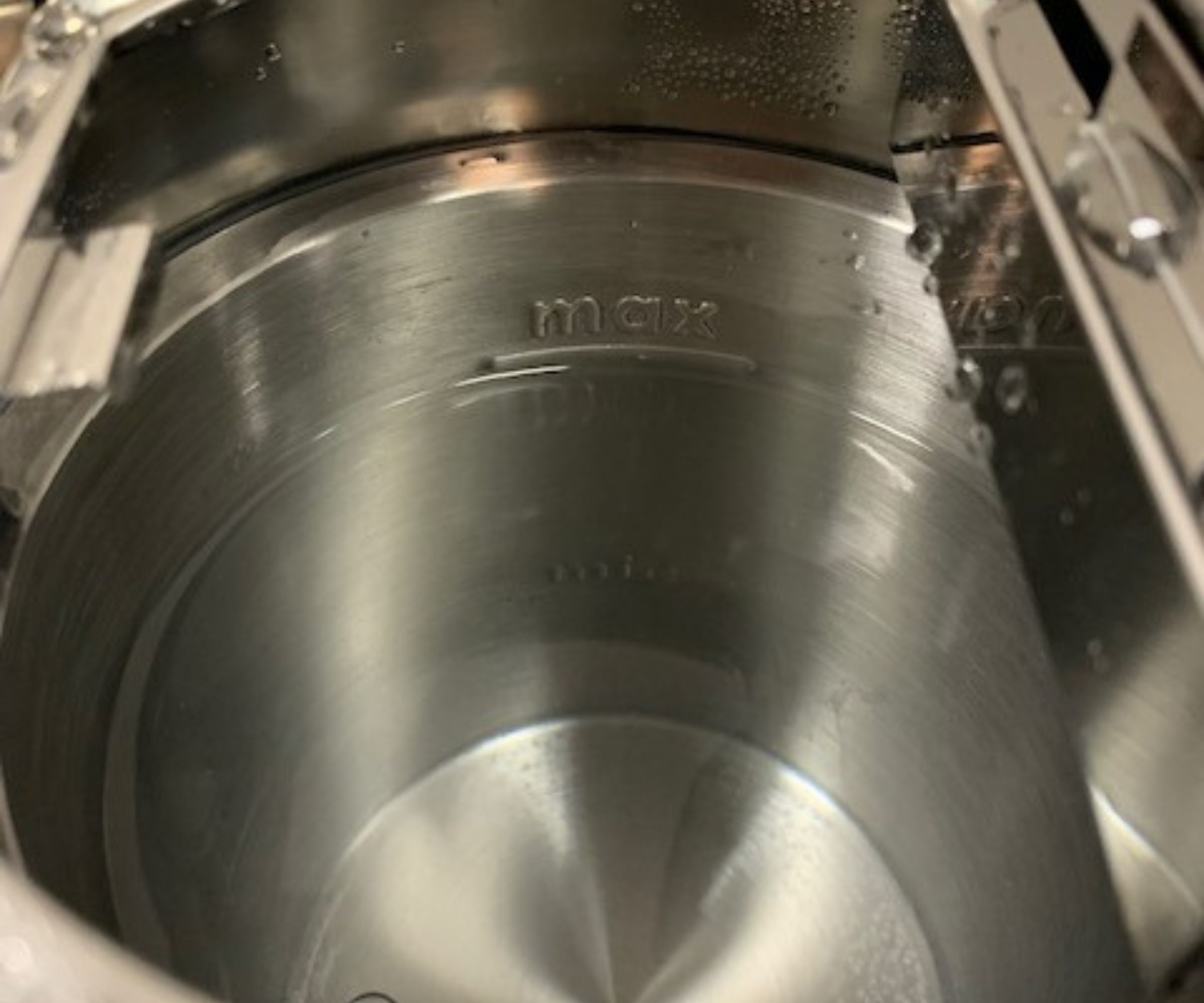
For my second test, I wanted to boil a larger volume of water: as much as I could fit inside the Aarke Electric Kettle. I was keen to see how long it took to boil and how well that double-wall construction retained heat.
I let my kettle cool after the first test, in the hopes of getting a more accurate temperature reading. A few minutes later, I filled the Aarke Electric Kettle with 40.5 fl. oz of water, all the way up to the maximum capacity line. Then, just like last time, I slotted the kettle onto its base and set it to boil.
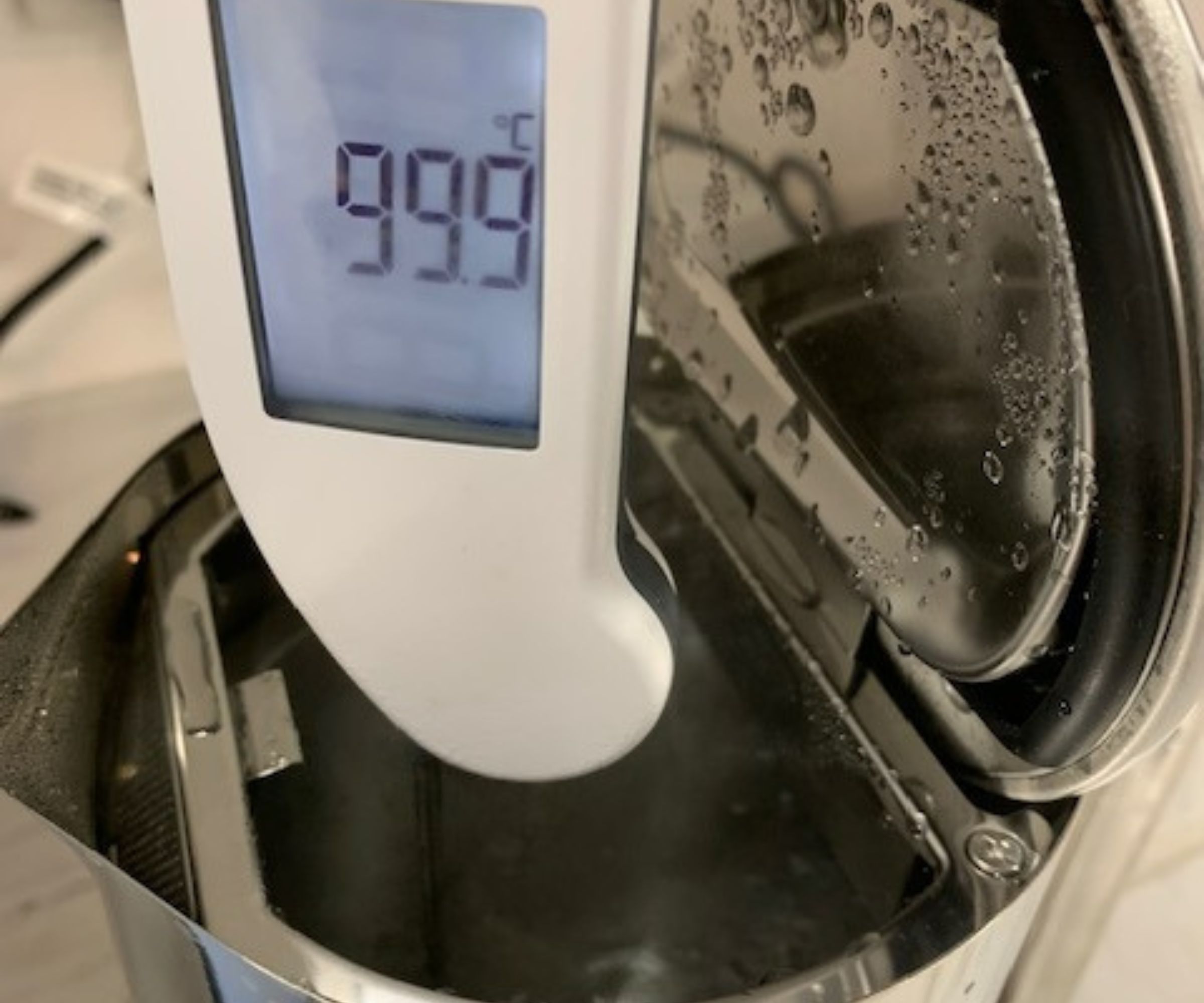
This water took a lot longer to boil. That makes sense: it takes more time, and more energy, to raise the temperature of a larger volume of water. In the end, it took the Aarke Electric Kettle four minutes, or 240 seconds, to boil 40.5 oz. Not the speediest in the world, but still pretty fast for that volume of water.
The Aarke Electric Kettle worked quickly and quietly to get the water up to temperature. This time, I had my camera and my digital thermometer at the ready, and I was able to document a near-perfect reading. So far, I was seriously impressed.
Test 3: minimum water level, minimum temperature
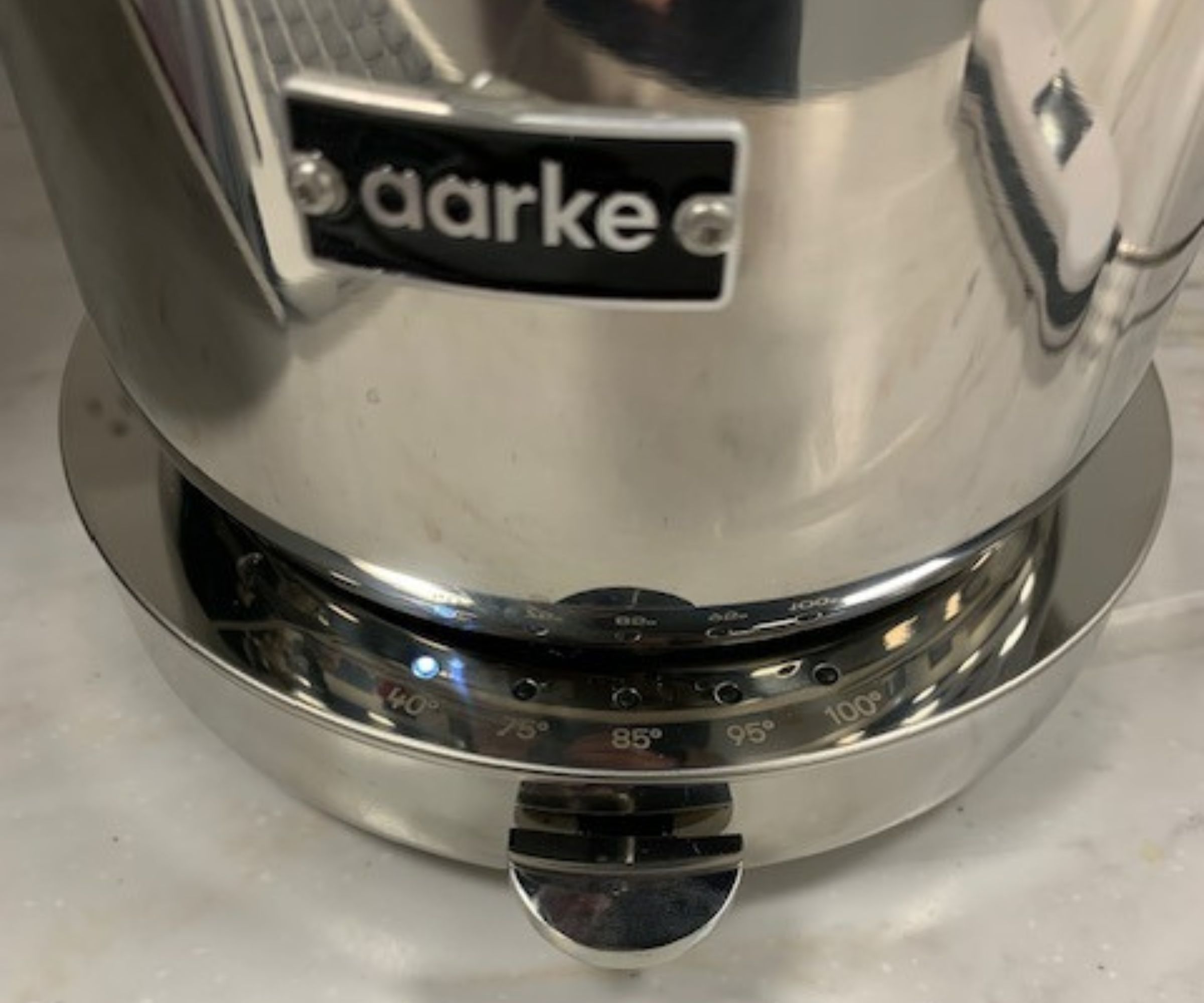
Any electric kettle worth its salt can boil water. It takes a smart machine to regulate temperature. I decided to test the Aarke Electric Kettle's warming capacity and set water to simmer at 40°C, which is just over 100°F.
To start, I stuck the Aarke Electric Kettle under the faucet and filled it to the minimum water line. I lowered the lid and pressed the power base button twice to set the machine to 100°F. It took about 75 seconds to get the water up to temperature and ready for inspection.
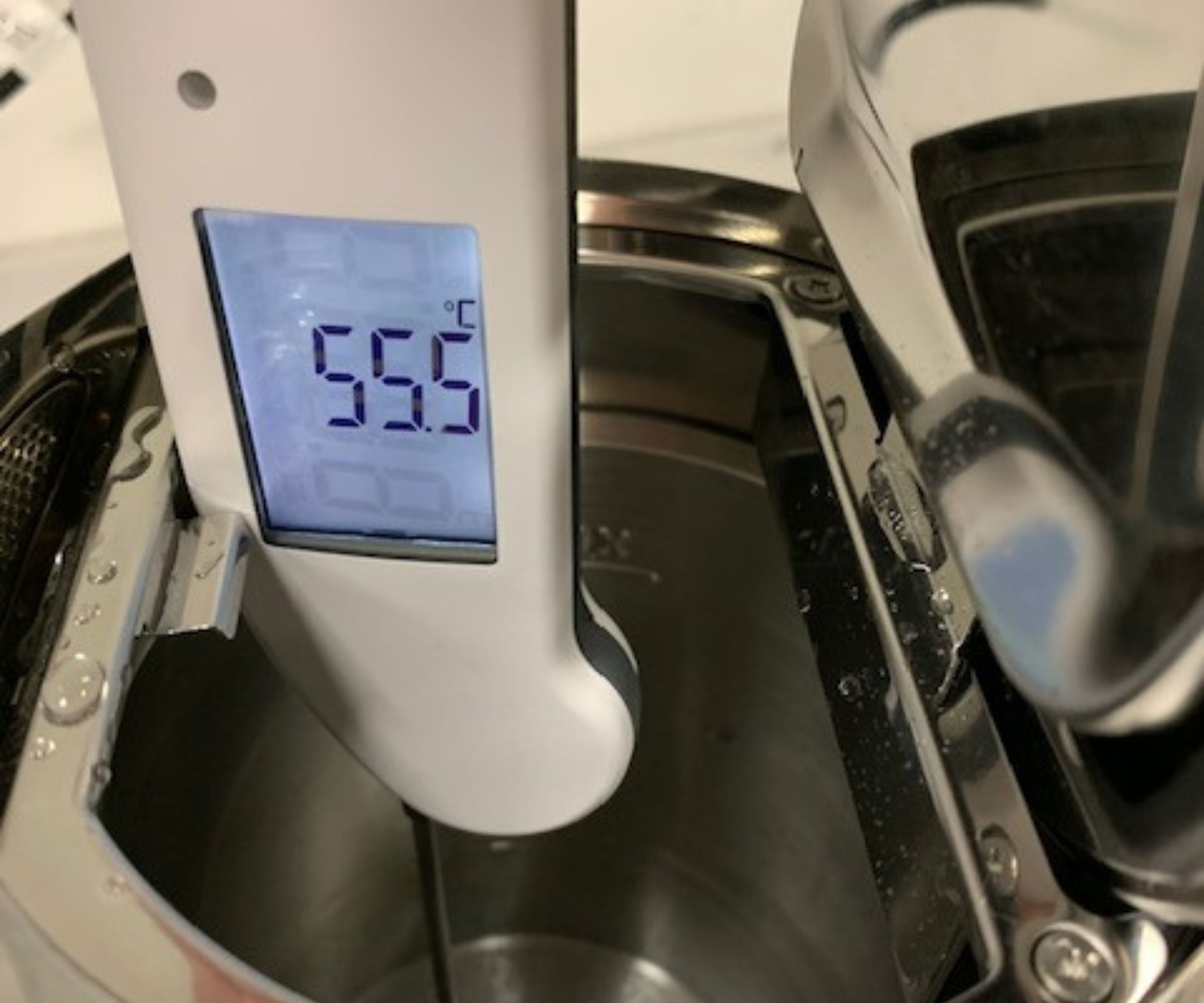
When I inserted my digital thermometer, I got a temperature reading about 15 degrees hotter than expected. This threw me: I'd filled the Aarke Electric Kettle with water from the faucet, same as always, and I'd left the kettle to cool for a good 10 minutes after Test 2.
Drinking water at this temperature won't scald you. In fact, it could boost your blood circulation, aid your digestion, and relieve aches and pains. Given the inaccuracy of Aarke's temperature regulation this time around, I'd hesitate to drink this water straight from the kettle. I'd recommend pouring it out and letting it cool, instead.
Test 4: maximum water level, minimum temperature
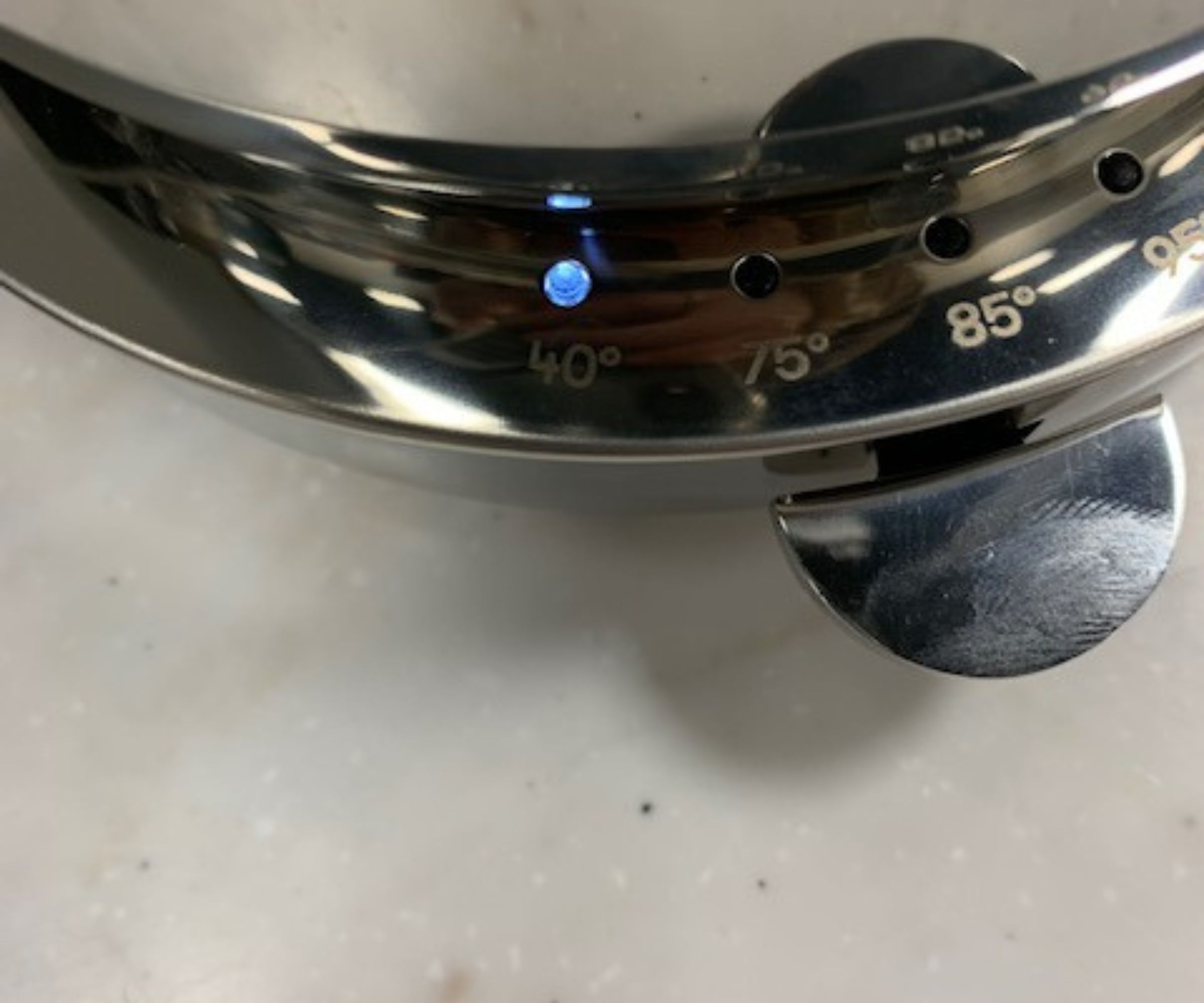
Following that minor disappointment, I wanted the Aarke Electric Kettle to prove itself in the final test. For the sake of completeness, I decided to boil the maximum volume of water at the minimum temperature.
You know the drill by now: I filled the kettle, fitted it onto the base, and pressed the power button. After a few rounds of testing, the Aarke Electric Kettle was beginning to show finger smudges. That's the danger of a stainless steel surface. To keep it clean, you'll need to buff the body of the kettle at least once a week.
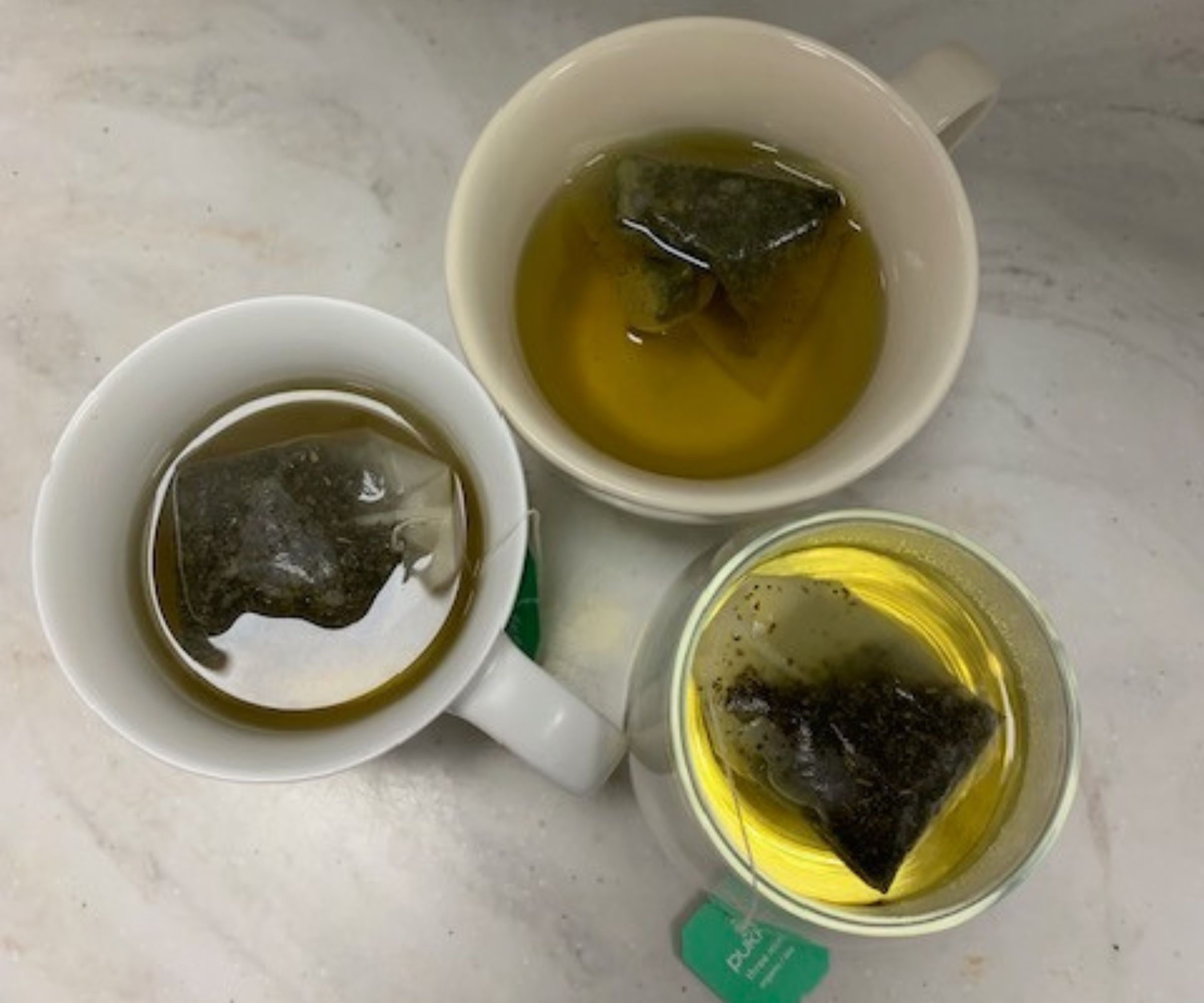
The Aarke Electric Kettle took two minutes, or 120 seconds, to warm 1.2L of water. This time around, the temperature regulation was much more accurate, and warmed the water to 105°F, just one degree warmer that expected.
I put away my digital thermometer and got out my mugs – it was time for tea. I poured water from the Aarke Electric Kettle over a selection of tea bags and left them to brew. I offered two of the mugs to Laura and Molly, two of our expert testers who were just taking their tea break. Both agreed that the water was pleasantly warm: not too hot and not too cold, but just right for sipping.
Cleaning the Aarke Electric Kettle
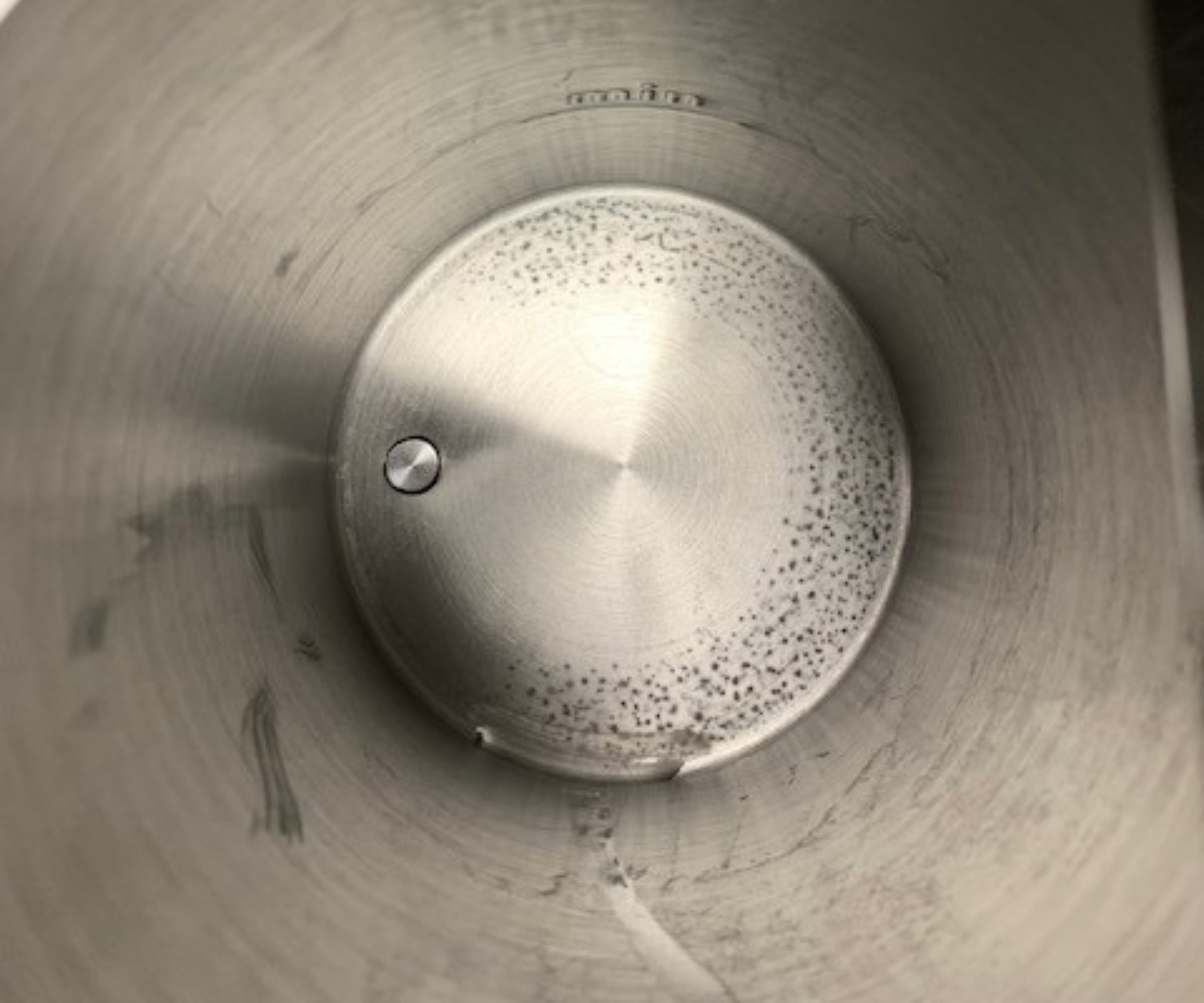
Compared with the competition, the Aarke Electric Kettle is pretty easy to clean. All you need to do is rinse it under warm water. The stainless steel surface is seamless, without any of the rims and ridges that make scrubbing a chore. I recommend rinsing your kettle and leaving it to air dry, before using the microfiber cloth to buff away any streaks or smudges.
As you might be able to see from the image above, small dots started to appear on the base of the kettle towards the end of the test. This looks like the beginnings of limescale, the chalky deposit that's left behind when hard water evaporates. You might not like the sound of limescale, but it's really nothing to worry about: in small quantities, like these, it won't do any damage. Aarke recommends descaling your kettle once every two months and giving your lime filter a good scrub with dish soap. Whatever you do, it's worth learning how to clean an electric kettle for safe, hygienic boiling.
How does the Aarke Electric Kettle rate online?
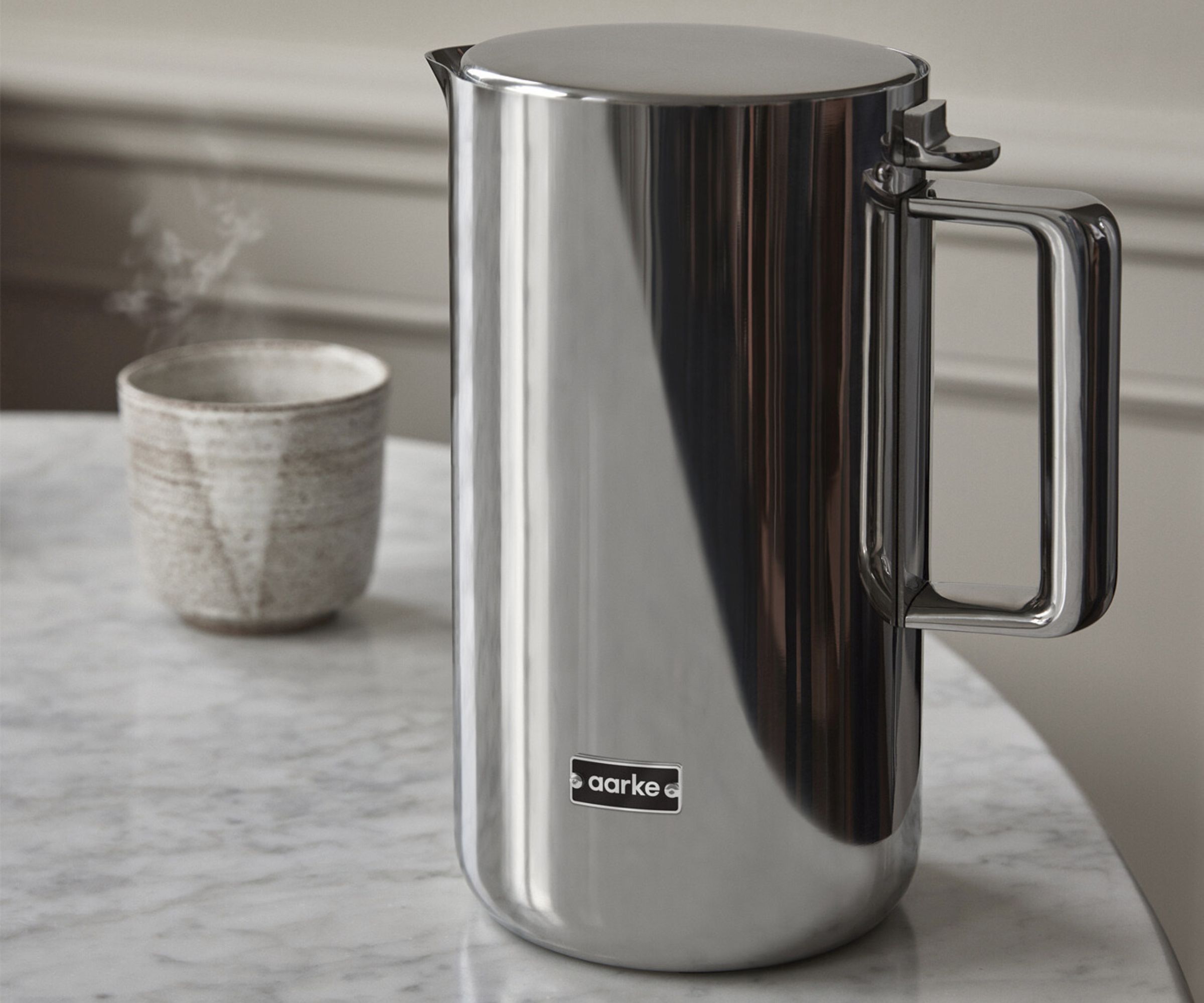
The Aarke Electric Kettle only launched last fall. It's a recent edition to the range at Aarke, and one of the newest electric kettles on the market, which might explain why it's so hard to find reputable reviews, aside from a smattering on Amazon. Funnily enough, they're all five-star. One customer praises the 'subtle Scandinavian style', while another declares that 'the function matches the form'.
The only real complaint concerns the kettle's size. The Aarke Electric Kettle has a capacity of 40.5 fl. oz. That should be more than enough for smaller households, but it might not be sufficient for a whole family of tea drinkers. Then again, there's no such thing as a bottomless kettle. If you do run out of water, all you have to do is fill it back up.
How does the Aarke Electric Kettle compare to other kettles?
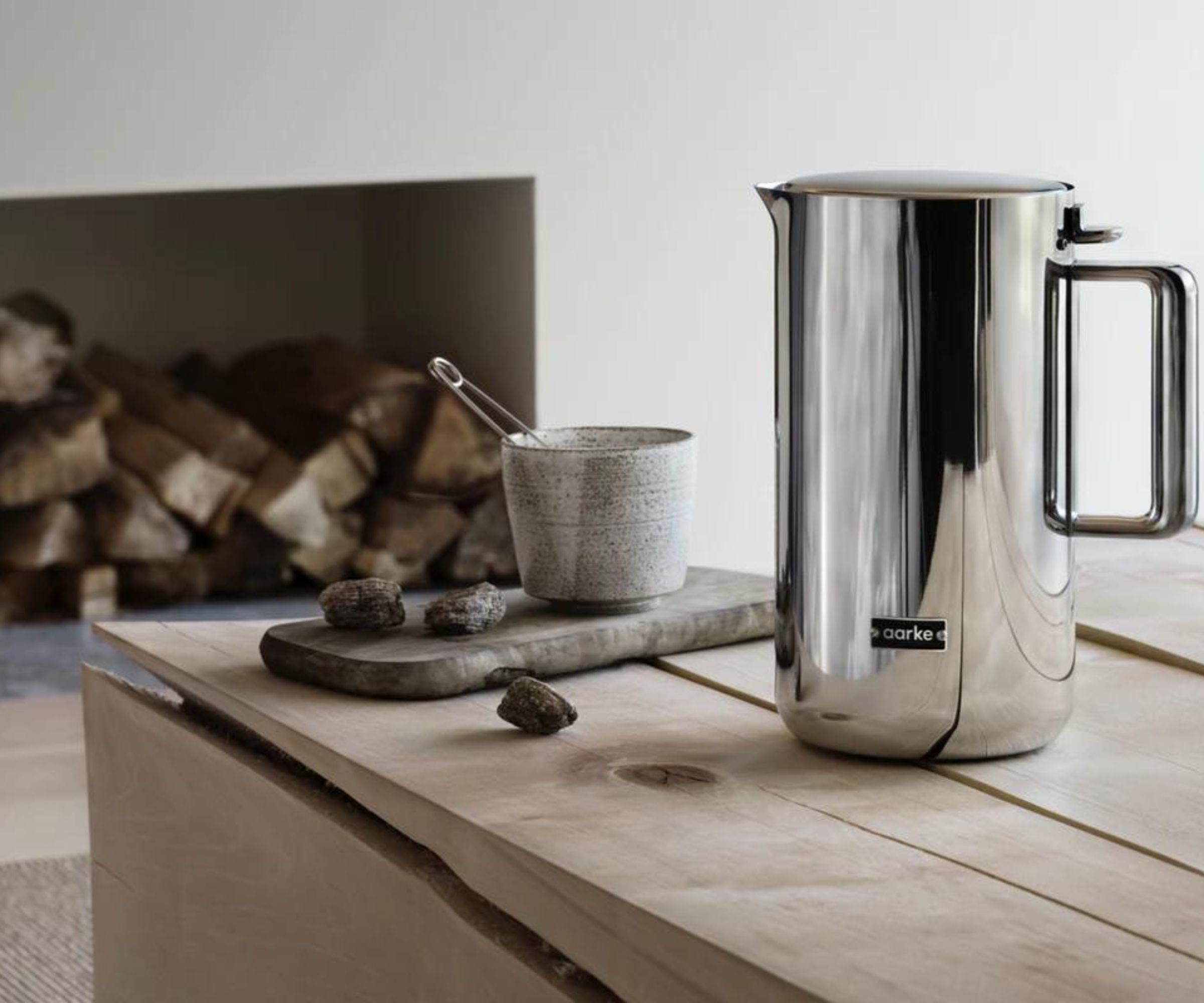
The Aarke Electric Kettle ticks all my boxes, but it won't suit everyone. If Aarke's stainless steel design leaves you cold, and you're looking for something classic, you might prefer the Fellow Stagg EKG Electric Gooseneck Kettle, available at Amazon. It comes with a pointed spout for powerful, precise pouring. Plus, it's matte black, so it won't pick up quite so many smudges or stains.
If you appreciate Aarke's thermoregulating capabilities, but you're looking for something more capacious, you should consider the Breville Smart Kettle Luxe, available at Breville. This 1.7L kettle holds space for up to seven cups at a time. It's ideal for larger households or gatherings.
The Aarke Electric Kettle is crafted from stainless steel, which should complement any kitchen color palette. If you're looking for something that can stand out against white walls, then you might prefer the Smeg Variable Temperature Kettle, available at QVC. It comes in a range of cute pastel shades, from baby blue to rosy pink, with a few bright whites, reds, and blacks thrown in for good measure.
Should I buy the Aarke Electric Kettle?
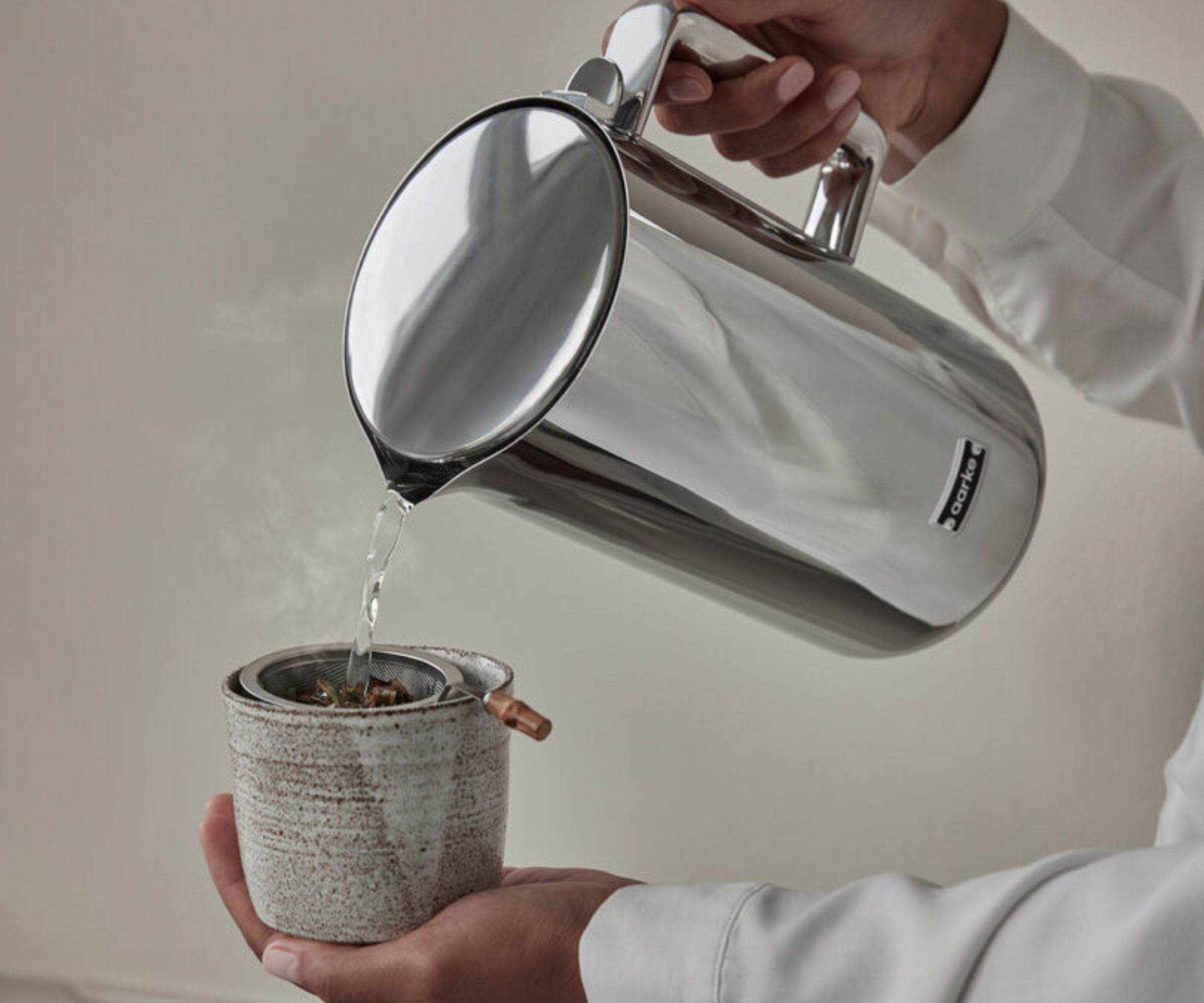
The Aarke Electric Kettle retails for around $270. That's a lot of money to spend on a kettle. If you're not big on tea or French press coffee, you might not be able to justify the purchase. If you regularly warm or boil water, and you want to do it in a sleek machine, then I can't recommend the Aarke Electric Kettle highly enough. It's an excellent insulator and by far the best-looking electric kettle on the market.
How we test kettles
We're stringent with our testing standards at H&G, and while electric kettles might seem straightforward, we don't let standards slip. We test our kettles at the minimum fill level and the maximum fill level. We record any variation in temperature from the claims of the manufacturer and what we actually find on our thermometers, and we also time how long it takes. We also record the noise level in decibels of kettles as they come to a boil. That's to say nothing of all our user tests, assessing how easy the kettle is to use, clean, maintain, and store. There's more information about our processes in our explainer of how we test.







